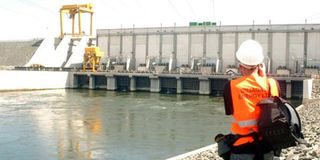Bujagali power cost set for reduction

Bujagali hydro power station
What you need to know:
- The other highlight of the 2017/2018 Budget speech was the rehabilitation of the Tororo–Pakwach Railway Metre Gauge line to support delivery of equipment for Oil production and the allocation of Shs81.8 billion ‘to continue implementation of several power projects’.
- Mr Kasaija did not name the projects, but said the government would “soon” grant more oil production licences to oil companies.
Kampala. Uganda’s large manufacturers will in October get to know by how much the electricity tariff they pay will be reduced.
That is when the African Development Bank (AfDB), which the government had engaged early this year to refinance Bujagali hydropower plant’s construction loan, is expected to hand in its report.
Refinancing the plant is one of the many measures the government has undertaken to reduce Bujagali’s power generation tariff, which stands at $13 cents (Shs467) per unit, to $5 cents (Shs179) per unit.
“The latest information from AfDB is that the refinancing arrangements should be completed by October 2017,” Finance minister Matia Kasaija said while reading the Financial Year 2017/2018 Budget in Kampala on Thursday.
The other measure the government has undertaken to reduce Bujagali power tariff further has been the granting of a five-year corporate income tax break to Bujagali Energy Ltd (BEL), the special purpose vehicle for Bujagali HPP.
This measure alone is expected to reduce BEL’s generation tariff by $0.87 cents (about Shs31).
By granting BEL the tax break, the government will have to forego Shs80 billion it would have collected from BEL.
Manufacturers have consistently said the high electricity tariffs mean their products are produced at higher costs than, say, those made in Egypt.
Consequently, the high costs are passed onto the consumers in form of higher prices of goods.
As a result, the products made in Uganda become uncompetitive against foreign goods with some of the manufacturers going on to threaten to either scale down production, cut jobs or relocated to countries with lower power tariffs.
It is against this backdrop that President Museveni, who says he wants to transform Uganda from a peasant economy to an industrial economy by 2020, pledged to work towards reducing the end-user tariff for large manufacturers.
Among other measures, the President hopes to achieve this by establishing publicly-funded large renewable power projects such as the 600-megawatt Karuma HPP and the 183MW Isimba HPP.
According to Mr Kasaija, the construction of the two plants is currently complete by 51 per cent for Karuma, and 63 per cent for Isimba.
The other highlight of the 2017/2018 Budget speech was the rehabilitation of the Tororo–Pakwach Railway Metre Gauge line to support delivery of equipment for Oil production and the allocation of Shs81.8 billion ‘to continue implementation of several power projects’.
Mr Kasaija did not name the projects, but said the government would “soon” grant more oil production licences to oil companies.




